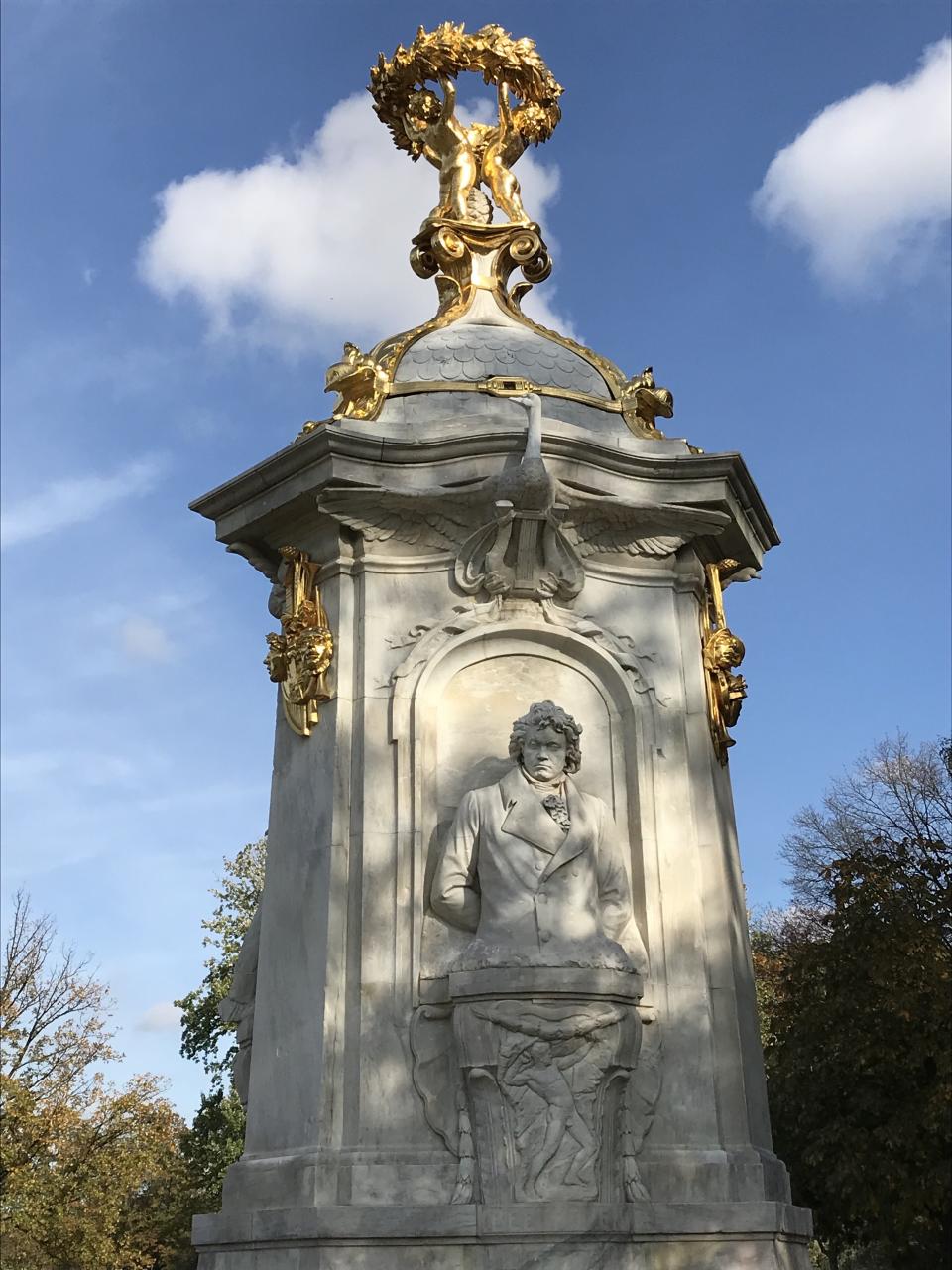About the Artist
Max Klinger
Born: Leipzig, 18 February 1857
Died: Grossjena, near Naumburg, 4 July 1920
Nationality: German
Collection
Museum der blidenden Künste, Leipzig
Documentation
In his review of the 14th Vienna Secession exhibition (1902), Friedrich Morgenthal commented on Klinger’s Beethoven :
“At first blush one is somewhat repelled by the radical, unconventional treatment of the subject. There seems little excuse for the nudity of the figure: the form is not one for the display of lines of beauty. It is massive, somewhat rotund, true to the life for a man of generous proportions and advanced in years. Even after close and sympathetic study one is inclined to believe that the figure would be more effective, more natural, and more pleasing were the shoulders and body draped in cloak or mantle….…So far as I know, it is wholly unlike anything ever attempted in the line of commemorative statuary. In a sense it seems like a daring experiment brought to a successful issue. The mere combination of materials – a white marble statue, seated in an elaborate bronze throne-chair, with a life-sized eagle carved out of black marble at its feet – is a hazardous venture, before which an artist less skillful in his manipulations than Klinger might long have hesitated and faltered. The further decoration of the chair with white marble angels’ heads, which fringe the bronze work without any apparent reason, is an effort at decorative symbolism which lays the artist open to the charge of bad taste and bad judgment. But…all have their symbolic meaning, and however the judgments of critics may differ, it seems ill-advised, in view of the wonderful execution of the work to quarrel with the artist over the selection of his materials or over his means of symbolism.”
Friedrich Morgenthal, “Max Klinger’s Statue of Beethoven,” Brush and Pencil, vol. 10, no. 5 (August 1902): 309-12.
Sherwin Simmons comments on the critical reception of Klinger’s Beethoven :
“Klinger played a highly publicized role in shaping public perception of Beethoven through the exhibition of his Beethoven Monument at the Vienna Secession’s fourteenth exhibition in 1902. That elaborate monument prompted the critic Ladjos Hevesi to compare it to Phidias’s statue of Zeus at Olympus and to describe it as ‘a true “Agalma”, the simulacrum of a modern god.’ It quickly became the subject of numerous articles and books, which made it the most well known contemporary work of art in Europe. In one study, an art historian attributed Klinger’s inspiration to Klein’s life mask [of Beethoven], on which Klinger based the marble face, and described the mask as ‘one of the very rare cases that a work of nature, recorded mechanically, has the value and impact of a consummate work of art.’ Although Klinger remained the foremost representative of German art for the broad public at the time of his death in 1920, the life mask realism and Gesamtkunstwerk (total work of art) spectacle of his Beethoven Monument had become kitsch for supporters of modernist art. Adolph Behne wrote that ‘as long as Max Klinger remains in all histories of art, I prefer the history of kitsch.’ In an article following the artist’s death, Julius Meier-Graefe, who had led criticism of Klinger during the century’s first decade, called him a ‘virtuoso of the trivial’ and wondered why Klinger did not hide a mechanism in the monument’s base that would make Beethoven’s eyes roll and the eagle’s wings flap. Commenting on its status in 1920, he advised, ‘Put the bird away, end it. It belongs to the military things that are demanded by the Allies. Otherwise don’t be surprised if young Bolshevists smash the last vestige of your middle-class way of life to bits.’”
Sherwin Simmons, “Chaplin Smiles on the Wall: Berlin Dada and Wish-Images of Popular Culture,” New German Critique, no. 84 (Autumn 2001): 10.
Related Works by Other Artists
Joseph Wilibroard Mähler, Beethoven, 1815 (Historical Museum, Vienna)
